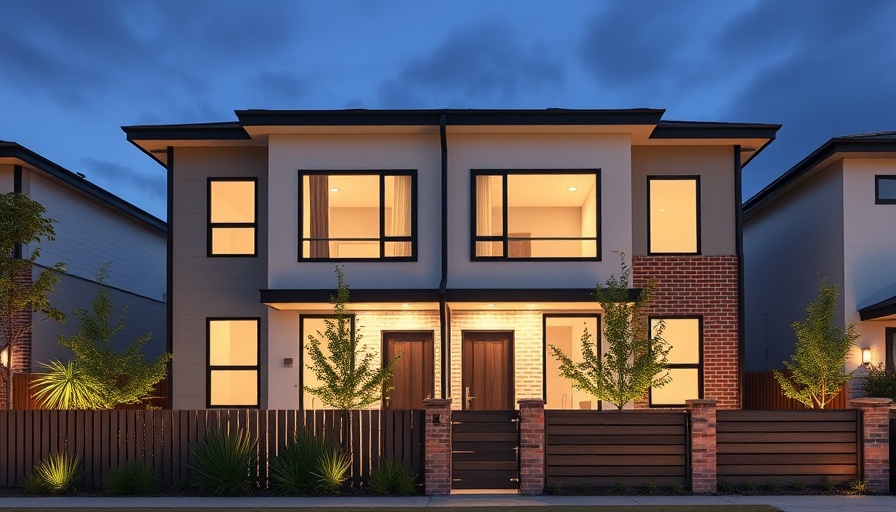
The Rise of Dual Occupancy Homes in Australia
Finding an affordable home in Australia presents a unique challenge. Many potential homeowners face dilemmas of location versus cost; some areas are prohibitively expensive while others are simply too far from urban conveniences. For the savvy buyer or investor, dual occupancy homes are emerging as a revolutionary alternative, especially appealing in today's market.
What Are Dual Occupancy Homes?
Dual occupancy homes encompass a variety of living arrangements that allow for two households to coexist on a single piece of land, maximizing both space and benefit. Among the most popular types are:
- Duplex: Two separate living units sharing a wall, often ideal for cohabiting families or those looking to rent out one unit.
- Granny Flats: Smaller secondary units located on the same property, offering more privacy while serving as guest accommodations or rental spaces.
- Dual-Key Homes: A layout allowing for multiple households within one structure, with shared facilities that maintain personal privacy.
Economic Advantages of Dual Occupancy
Owning a dual occupancy home reduces costs significantly. Homeowners split expenditures such as mortgage payments and utility bills, particularly appealing for first-time buyers. Investors benefit from increased rental yields, making this model attractive in a fluctuating real estate market. With the right setup, landlords can generate consistent rental income from one unit while residing in another.
Enhancing Community Connections Through Shared Living
With rising living costs, dual occupancy homes enhance community ties. Shared facilities create opportunities for friendships and support networks among residents, reshaping traditional home ownership into a cooperative environment. This change largely attracts young couples, families, and investors alike, making a case for community-oriented living in urban areas.
Embracing Sustainability in Dual Occupancy Designs
As urban farming gains traction, dual occupancy homes often incorporate sustainable features like rooftop gardens and community gardens. Homeowners can cultivate their food, blending self-sufficiency with eco-friendliness, helping to address food security concerns prevalent among urban dwellers.
Future Trends in the Housing Market: Why Dual Occupancy Homes Matter
Market analysts project continued growth in dual occupancy properties, particularly as urban spaces become increasingly crowded. This model provides efficient use of land while benefiting from proximity to amenities in cities. It’s not just a housing trend; it reflects an evolving lifestyle choice toward conscious living.
Potential Barriers to Consider
Despite its growing popularity, not everyone sees the appeal of dual occupancy homes. Some potential buyers may perceive a lack of privacy or are hesitant about shared arrangements. Furthermore, regulations can vary widely by region, necessitating due diligence before purchasing.
Conclusion: The Value of Dual Occupancy Homes
Dual occupancy homes present a progressive living solution, integrating sustainability, community, and affordability. As urban environments continue to change, this option deserves serious consideration for both personal and investment purposes. If you're looking to make a more sustainable choice in living arrangements, dual occupancy might just be the right step forward.
Explore how dual occupancy living can not only benefit you financially but also contribute to a thriving, sustainable community. For practical tips on enhancing your new living environment through urban gardening and sustainable agriculture, embrace the future of responsible living today!
 Add Row
Add Row  Add
Add 




 Add Row
Add Row  Add
Add 

Write A Comment